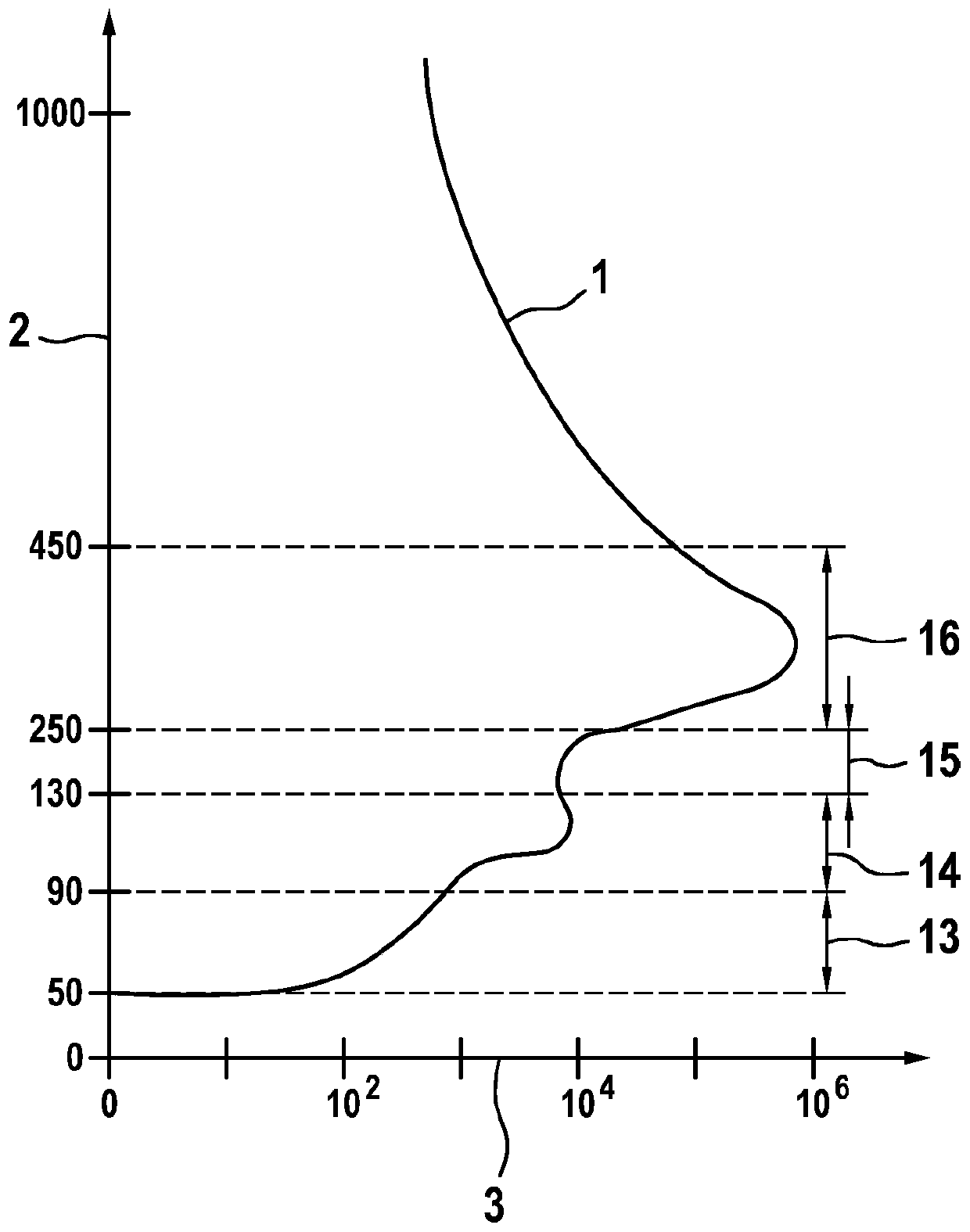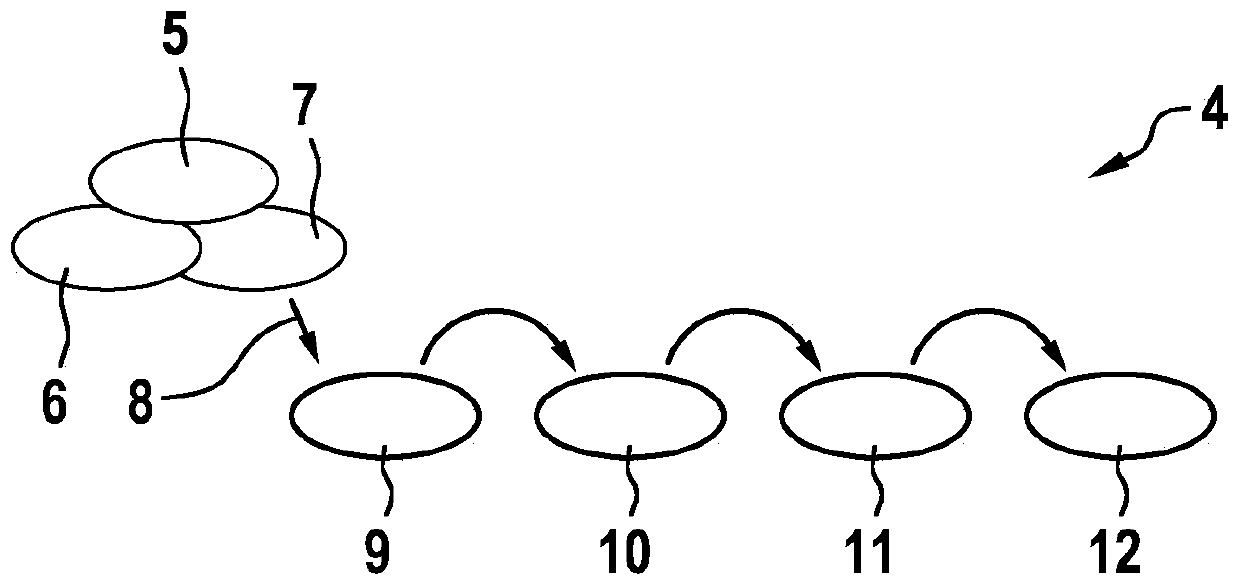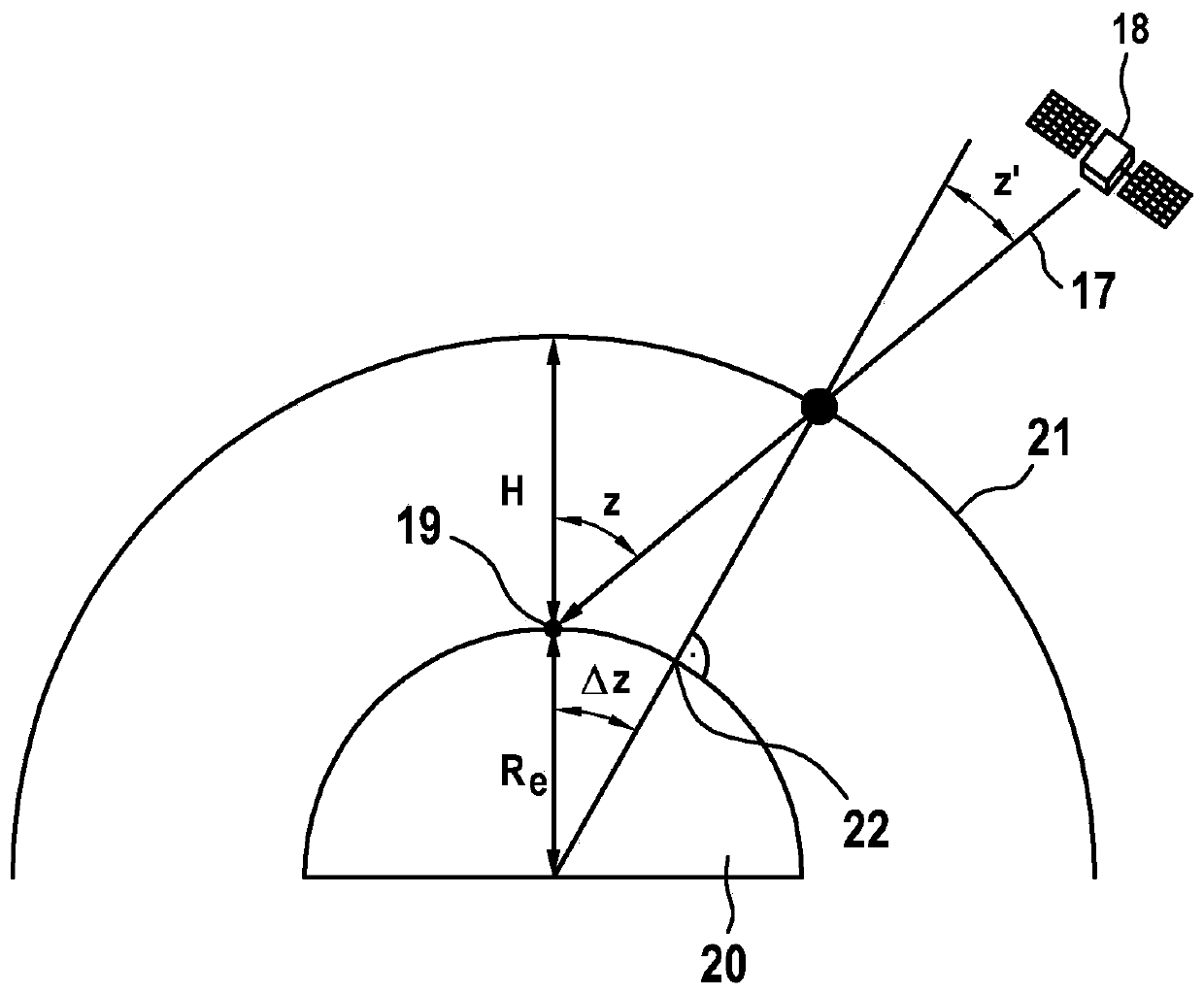Method for determining an electron density distribution in the earth's atmosphere
A technology of electron distribution and atmosphere, applied in the direction of radio wave measurement system, satellite radio beacon positioning system, instrument, etc., can solve the problems of large distance and low resolution of TEC data
- Summary
- Abstract
- Description
- Claims
- Application Information
AI Technical Summary
Problems solved by technology
Method used
Image
Examples
Embodiment Construction
[0036] figure 1 A diagram of the electron density distribution 1 of the ionosphere is schematically shown. Plot electron density 3 on the axis of abscissa, in units of electrons per cubic centimeter, and plot height 2 on the axis of ordinate, in units of kilometers. Depending on electron density and height, the layers D layer 13 , E layer 14 , F1 layer 15 and F2 layer 16 are different. It can be seen that the electron density is greatest in the F2 layer 16 and thus the F2 layer 16 has the greatest influence on signal propagation through the ionosphere.
[0037] figure 2 An exemplary model structure of the ionospheric model 4 is schematically shown, in which the method proposed here is used. In this case, the method is used, for example, to determine the electron density distribution in the ionosphere, wherein the altitude-dependent electron density is also used to determine the (position-dependent) TEC. figure 2 In this regard, the relationship between the individual cal...
PUM
 Login to View More
Login to View More Abstract
Description
Claims
Application Information
 Login to View More
Login to View More - R&D
- Intellectual Property
- Life Sciences
- Materials
- Tech Scout
- Unparalleled Data Quality
- Higher Quality Content
- 60% Fewer Hallucinations
Browse by: Latest US Patents, China's latest patents, Technical Efficacy Thesaurus, Application Domain, Technology Topic, Popular Technical Reports.
© 2025 PatSnap. All rights reserved.Legal|Privacy policy|Modern Slavery Act Transparency Statement|Sitemap|About US| Contact US: help@patsnap.com



